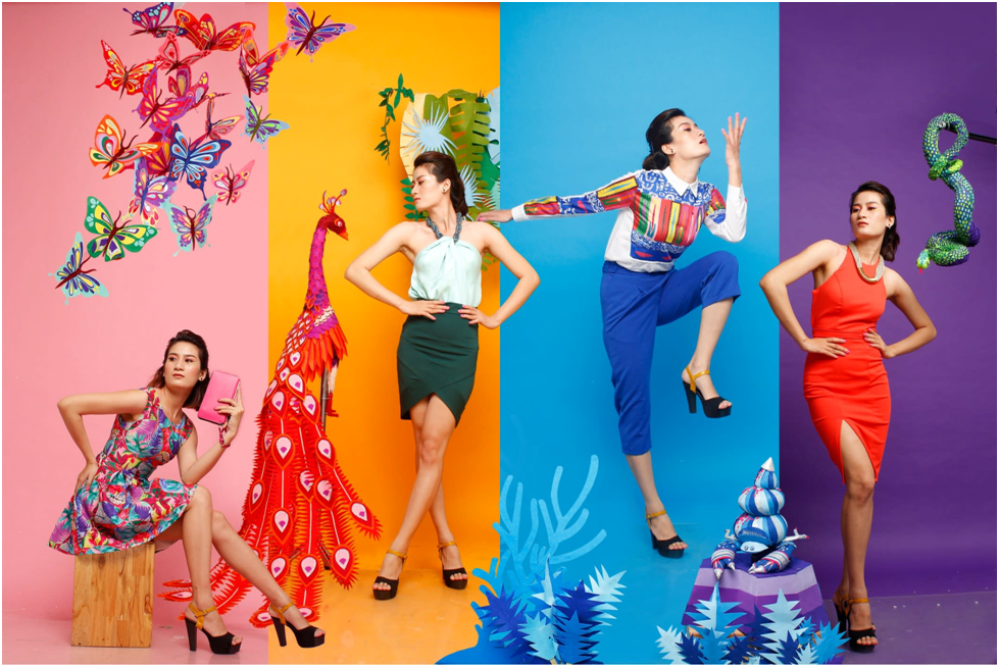Introduction
Color plays a pivotal role in fashion design, influencing not only the aesthetic appeal of garments but also affecting the emotions and perceptions of both the wearer and the observer. Understanding the science of colors enables designers to create collections that resonate on a psychological level, convey specific messages, and align with cultural contexts.
- The Psychology of Color in Fashion
Colors evoke distinct psychological responses, and their application in fashion can significantly impact mood, behavior, and perception.
Red: Passion and Energy
Red is a color that exudes passion, energy, and excitement. It has the ability to stimulate the senses, raise heart rates, and create a sense of urgency. In fashion, red is often associated with power and confidence, making it a popular choice for individuals aiming to make a bold statement. However, it’s essential to use red strategically, as excessive use can be overwhelming.
Blue: Calm and Trustworthiness
Blue is frequently linked to feelings of calmness, tranquility, and trust. It promotes relaxation and clear thinking, which is why it’s commonly chosen for professional attire. Light blues are soothing and approachable, while darker shades convey authority and sophistication.
Yellow: Optimism and Creativity
Yellow symbolizes happiness, optimism, and creativity. It’s a color that can uplift moods and bring a sense of joy. In fashion, yellow is often used to add a playful and energetic touch. However, it’s important to select the right shade, as overly bright yellows can be overwhelming.
Green: Balance and Freshness
Green represents growth, balance, and freshness. It’s a color that evokes feelings of harmony and renewal. In fashion, green can symbolize a connection to nature and an environmentally conscious lifestyle. Lighter greens create a soft, refreshing look, while darker shades convey luxury and sophistication.
Purple: Luxury and Mystery
Purple is associated with luxury, mystery, and creativity. Historically linked to royalty, it’s a color that signifies elegance and sophistication. In fashion, purple can make a bold statement, with lighter shades like lavender conveying calmness and deeper hues like plum representing mystery.
Black: Elegance and Authority
Black denotes elegance, authority, and sophistication. It’s a timeless color in fashion, often used to convey power and formality. Black attire is versatile and can be both slimming and authoritative, making it a staple in professional and formal settings.
White: Purity and Simplicity
White symbolizes purity, simplicity, and freshness. In fashion, white is associated with cleanliness and new beginnings. It’s commonly worn at weddings to represent innocence and is a popular choice for summer attire due to its light and airy feel.
Pink: Femininity and Playfulness
Pink is traditionally linked to femininity, love, and playfulness. From soft pastels to vibrant fuchsias, pink hues in fashion can convey a range of emotions, from tenderness to strength. Lighter shades are calming, while darker tones like magenta can be bold and energetic.
Brown: Warmth and Stability
Brown exudes warmth, stability, and earthiness. It’s a color that evokes feelings of reliability and comfort. In fashion, brown is often associated with autumn and winter wear, reflecting the colors of nature during those seasons. Lighter browns like beige offer a neutral palette, while darker shades like chocolate convey richness and elegance.
- Color Theory in Fashion Design
Color theory is a fundamental aspect of fashion design, guiding designers in creating harmonious and visually appealing collections.
The Color Wheel
The color wheel is a circular diagram of colors arranged by their chromatic relationship. It serves as a tool for understanding color relationships and creating color schemes
Color Harmonies
Designers utilize various color harmonies to achieve visual balance and interest:
- Complementary Colors: Colors opposite each other on the color wheel (e.g., red and green) create vibrant contrasts when paired.
- Analogous Colors: Colors next to each other on the wheel (e.g., blue, blue-green, and green) offer serene and comfortable designs.
- Monochromatic Colors: Variations of one hue, including its shades and tints, provide a cohesive and unified look.
Warm and Cool Colors
Colors are also categorized as warm or cool:
- Warm Colors: Red, orange, and yellow hues that evoke warmth and energy.
- Cool Colors: Blue, green, and purple tones that convey calmness and tranquility.
Understanding these categories aids designers in creating balanced and emotionally resonant designs.
- Cultural and Symbolic Significance of Colors
Colors carry diverse meanings across different cultures, and designers must be mindful of these associations to ensure their designs are culturally sensitive and appropriate.
- Red: In Western cultures, red signifies passion and love, while in some Asian cultures, it represents luck and prosperity.
- Blue: Often associated with sadness in Western contexts, blue symbolizes tranquility and trustworthiness
- Yellow: In Egypt, yellow denotes mourning, whereas, in Western societies
